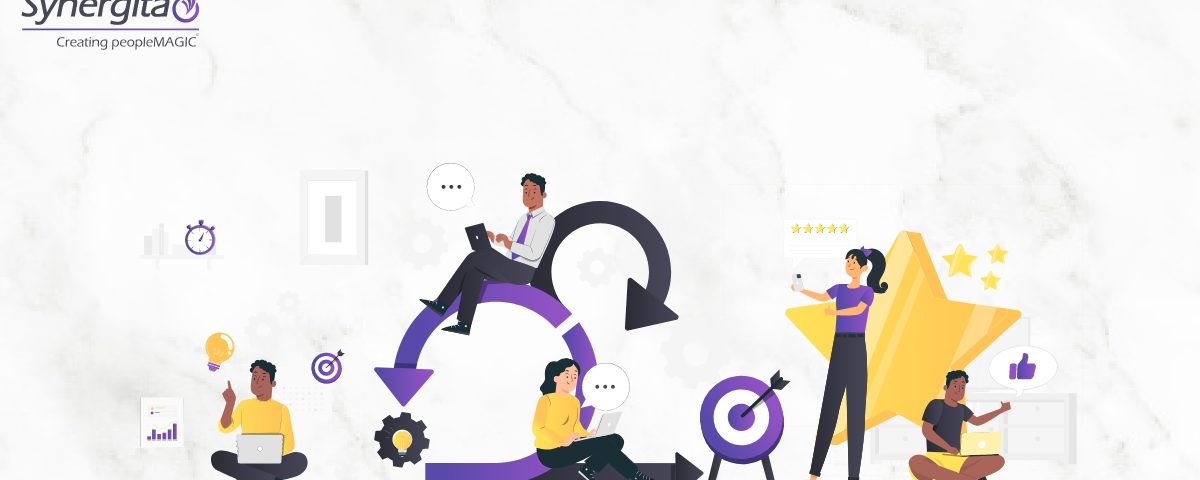Did you know that only 14% of employees feel that their performance reviews motivate them to do better? So then, what is the point of these reviews, you may ask? Well, the truth’s that over time, business leaders have realised that the traditional performance review system has several drawbacks, including inefficiency, demotivation, discouragement of teamwork, and inflexibility. And let us not forget that it is also cost-intensive.
To overcome these drawbacks, they have realised the need to pivot their attention to technological tools. Today, innovation permeates most facets of the lives of employees, from mobile phones and GPS systems to shopping apps. With efficiency and convenience just a few clicks away, more seem to expect nothing less from their performance management process.
Hence, performance management systems – backed by technology innovation – can help save time and effort while ensuring that employees feel more connected to the evaluation process.
But how?
For starters – they should provide an objective set of indicators that help you evaluate everyone. It would increase transparency in how you review your employees and track their development.
However, not all performance management systems (PMS) are made equal. Your PMS will depend on your employees’ needs and requirements, the organisation’s structure, the metrics you want to assess, and more. If you are looking to replace a legacy system with a more modern one or considering adding a PMS to your technology stack, below are the top performance management features you should look for.

8 Must-Have Features of a Performance Management System
1. Set Actionable Goals
One of the most important features of any performance management software is”Goal Setting.” But why are goals so important? Employees with KPIs and SMART goals are more productive, motivated, and dedicated to their jobs. In addition, employees perform better when there are defined goals than when there are none.
Employees should be able to define, manage, and align their personal goals with team and organisational objectives. Everyone will benefit from understanding how they contribute to the company goal and why their work matters. Additionally, there should be regular check-ins and OKRs for each goal.
2. Receive Continuous Feedback
Whether working from home or the office, your employees need to be motivated and engaged in doing their work productively. A feedback module in your performance management software can help you with this. Employees benefit from receiving timely performance-related feedback from their managers or team leaders.
Feedback promotes dialogue between employees and managers. An open feedback culture fosters teamwork, increases output, and develops a culture of progress, all of which help to boost employee engagement.
3. Present Rewards and Recognition
Rewards and recognition increase employee satisfaction. Initiatives for rewarding and recognising employees have been shown to promote employee morale, lower attrition, and increase productivity. Additionally, it demonstrates to employees that their efforts are valued and recognised. Therefore, a performance management software that rewards and recognises your employees will help boost employee engagement.
4. Enable Succession Planning
The best performance management software for businesses must also include components for organisational succession planning. Succession planning helps employees transition to the next stage of their careers. Their competencies and skills can be assessed using a tool such as the 9-box grid. To ensure that the succession planning process is seamless and proactive, the performance management solution should contain coaching and career development features.
5. Offer Customisable Reporting
Performance management software must have a function that enables employers to create different reports according to employee requirements. Completion status reports of employees and their potential for the future should also be available with easy options for viewing, editing, and sharing by authorised users.
6. Offer Training and Personal Development
An essential facet of any performance management software is nurturing and investing in your employees and their development. Employers and managers can quickly identify strengths, skill gaps, development areas, and training opportunities with the help of performance management software. Then employees can use the built-in templates for personal development plans to organise, track, and update their career development initiatives.
7. Present Actionable Insights
Performance management software must offer employers helpful information they can access and implement. A good performance management feature is an easy-to-use dashboard that contains readily available information to make management and employee-specific decisions.
8. Provide 360-Degree Feedback
The 360-degree feedback function is very crucial as it compiles multi-layered feedback on an employee’s performance. Contrary to the traditional feedback system that flows down the management hierarchy, 360-degree feedback involves anonymous feedback from several sources, including a person’s managers, juniors, and peers/colleagues.
Wrapping up
If your company is like most others, investing in talent is your top priority and most considerable outlay. Yet you have been forced to manage employee performance within the constraints and inefficiencies of annual performance evaluations. Fortunately, there is a better approach to managing all aspects of employee performance. It begins with selecting an employee performance management system that provides the above eight advantages.
So, are you prepared to support your employees’ performance so they can succeed? To find out more, sign up for a free trial with Synergita and see things change for the better.
Also Read:

